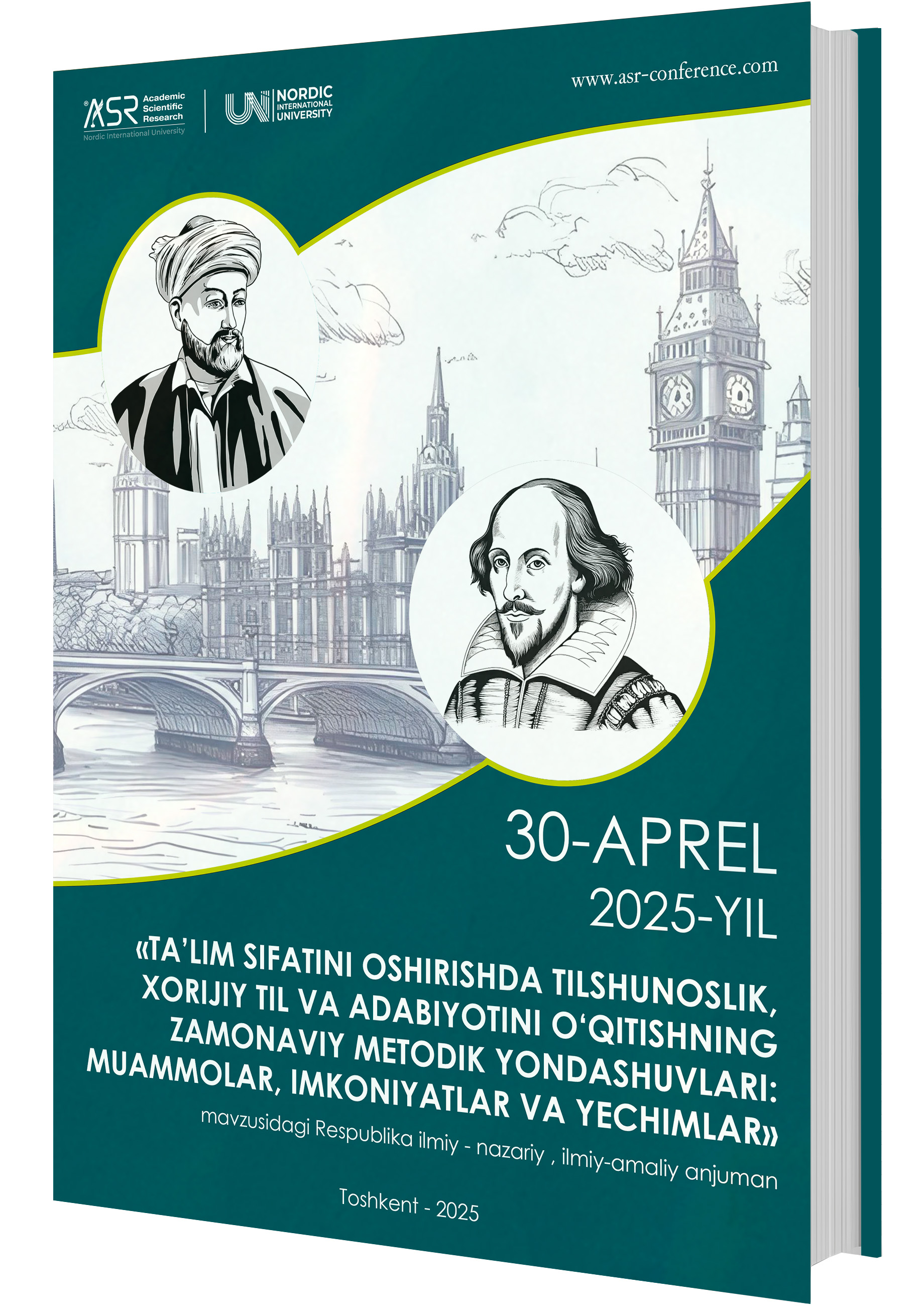COGNITIVE-PRAGMATIC ANALYSIS OF THE EMOTIONAL SENTENCES IN ENGLISH AND UZBEK LANGUAGES
Аннотация
This thesis examines the cognitive-pragmatic aspects of emotional sentences in English and Uzbek, analyzing how emotional expressions are framed and interpreted within each language's cognitive and pragmatic context. It investigates the role of cultural norms, linguistic structures, and context in shaping emotional expressions, using both cognitive and pragmatic theories to understand how emotions are communicated. By comparing emotional sentences in both languages, the study highlights both universal and culture-specific features in the expression of emotions. The findings reveal how emotional sentences are influenced by cognitive mechanisms and the social context in which they occur, reflecting the unique emotional landscape of each language.
Библиографические ссылки
Austin, J. L. (1962). How to Do Things with Words. Harvard University Press.
Ekman, P. (1992). An Argument for Basic Emotions. Cognition and Emotion, 6(3-4), 169-200.
Grice, H. P. (1975). Logic and Conversation. In P. Cole & J. Morgan (Eds.), Syntax and Semantics 3: Speech Acts. Academic Press.
Kövecses, Z. (2000). Metaphor and Emotion: Language, Culture, and Body in Human Feeling. Cambridge University Press.
Lakoff, G. (1987). Women, Fire, and Dangerous Things: What Categories Reveal About the Mind. University of Chicago Press.
Lazarus, R. S. (1991). Emotion and Adaptation. Oxford University Press.
Searle, J. R. (1969). Speech Acts: An Essay in the Philosophy of Language. Cambridge University Press.
Wierzbicka, A. (1999). Emotions Across Languages and Cultures: Diversity and Universals. Cambridge University Press.
Загрузки
Опубликован
Выпуск
Раздел
Лицензия
Copyright (c) 2025 Muniraxon Kadirova

Это произведение доступно по лицензии Creative Commons «Attribution-NonCommercial» («Атрибуция — Некоммерческое использование») 4.0 Всемирная.
Условия лицензии
Эта работа доступна под лицензией Creative Commons Attribution-NonCommercial 4.0 International License. Чтобы просмотреть копию этой лицензии, посетите http://creativecommons.org/licenses/by-nc/4.0/ или отправьте письмо по адресу Creative Commons, PO Box 1866, Mountain View, CA 94042, США.
По этой лицензии вы можете:
Поделиться — копируйте и распространяйте материал на любом носителе и в любом формате.
Адаптируйте — делайте ремиксы, трансформируйте и дорабатывайте материал.
Лицензиар не может отозвать эти свободы, если вы соблюдаете условия лицензии. На следующих условиях:
Атрибуция. Вы должны указать соответствующую ссылку, предоставить ссылку на лицензию и указать, были ли внесены изменения. Вы можете сделать это любым разумным способом, но не таким образом, который бы предполагал, что лицензиар одобряет вас или ваше использование.
Некоммерческое использование — вы не имеете права использовать материал в коммерческих целях.
Никаких дополнительных ограничений. Вы не имеете права применять юридические условия или технологические меры, которые юридически запрещают другим делать все, что разрешено лицензией.





